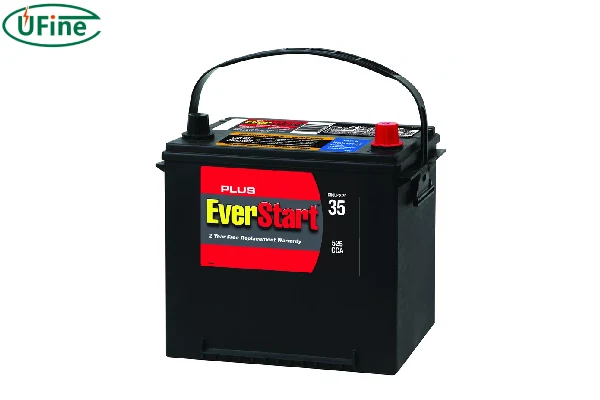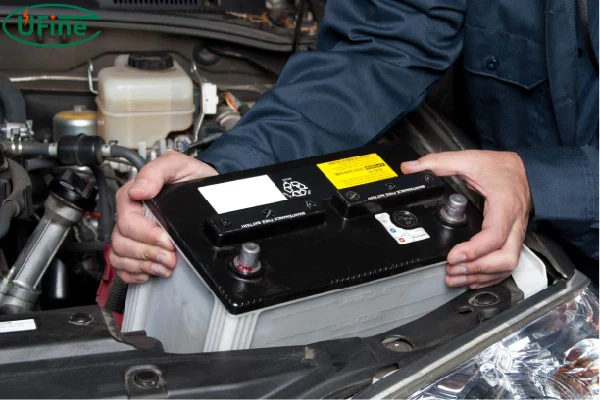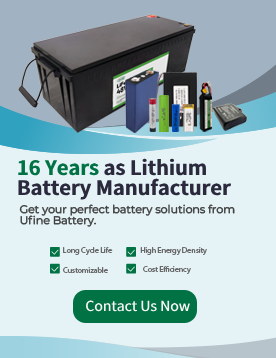
- Part 1. What is a group 35 battery?
- Part 2. Dimensions of a group 35 battery
- Part 3. Voltage and capacity
- Part 4. Battery types available
- Part 5. Other common battery group sizes
- Part 6. Applications of group 35 batteries
- Part 7. Price range
- Part 8. Best group 35 batteries in 2025
- Part 9. Choosing the right battery
- Part 10. Conclusion
- Part 11. FAQs
Choosing the right battery is crucial for reliable vehicle performance, long lifespan, and hassle-free installation. The Group 35 battery is one of the most widely used sizes, compatible with many compact and midsize vehicles.
In this guide, we’ll explain what a Group 35 battery is, its dimensions, voltage, capacity, types, applications, price range, common comparisons with other battery sizes, and top recommended brands for 2025.
Part 1. What is a group 35 battery?
A Group 35 battery is defined by its physical size, terminal layout, and performance characteristics. Using the correct group size ensures proper fitment, prevents interference with hold-down brackets, and avoids issues like reversed terminals or poor connections. Vehicles requiring Group 35 batteries include many Japanese, Korean, and domestic compact or midsize cars.
Part 2. Dimensions of a group 35 battery
A standard Group 35 battery typically measures:
| Dimension | Size |
|---|---|
| Length | 9.06 in (230 mm) |
| Width | 6.88 in (175 mm) |
| Height | 8.88 in (225 mm) |
These measurements ensure that the battery fits securely in most vehicle trays, preventing vibration and damage.
Part 3. Voltage and capacity
Group 35 batteries provide a standard 12-volt output, suitable for starting engines and powering vehicle electronics. Their capacity ranges from 44Ah to 65Ah, with higher capacities offering longer runtime and better performance for vehicles with heavy electrical demands.
Part 4. Battery types available
Group 35 batteries come in several chemistries:
- Flooded Lead-Acid: Affordable and reliable, but requires regular maintenance such as topping up electrolyte and cleaning terminals.
- AGM (Absorbent Glass Mat): Sealed and maintenance-free, offering higher performance and vibration resistance. Ideal for vehicles with start-stop systems or heavy electronics.
- Gel Cell: Maintenance-free with excellent deep-cycle performance, commonly used in RVs or marine applications.
- Lithium-Ion: Lightweight, long-lasting, maintenance-free, and high energy density, suitable for high-performance or weight-sensitive vehicles.
AGM VS Lithium VS Lead-Acid Battery: Comprehensive Comparison
Part 5. Other common battery group sizes
When considering alternatives or comparing battery sizes, these are some common BCI group classifications:
| Group | Dimensions (L×W×H) | Typical Use |
|---|---|---|
| 21 | 8.19 × 6.81 × 8.75 in | Small/midsize sedans |
| 24 / 24F / 24H / 24R | 10.25 × 6.81 × 8.88 in | Mid-size cars and light trucks |
| 25 | 9.06 × 6.88 × 8.88 in | Compact/midsize vehicles |
| 27 | 12.06 × 6.81 × 8.88 in | SUVs and larger vehicles |
| 31 | 13.00 × 6.81 × 9.44 in | Trucks, RVs, commercial vehicles |
| 34 / 34R | 10.25 × 6.81 × 7.88 in | Performance or compact cars |
| 35 | 9.06 × 6.88 × 8.88 in | Compact/midsize passenger vehicles |
| 51R | 9.38 × 5.06 × 8.75 in | Some Asian models |
| 65 | 12.06 × 7.56 × 7.56 in | Smaller trucks, specialty applications |
This comparison helps identify compatible alternatives or confirm fitment if multiple options are allowed.
Part 6. Applications of group 35 batteries
Group 35 batteries are versatile:
- Automotive: Cars, trucks, SUVs — providing reliable starting, lighting, and ignition power.
- Marine: Boats — for engine starts and electronics.
- RVs and Campers: Powering appliances and accessories during travel.
- Backup Power: UPS systems and generators for consistent performance.
Part 7. Price range
| Battery Type | Price (USD) |
|---|---|
| Flooded Lead-Acid | $100–$150 |
| AGM | $150–$250 |
| Lithium-Ion | $300+ |
While more expensive batteries cost more upfront, they usually provide longer lifespan, lower maintenance, and better overall performance.
Part 8. Best group 35 batteries in 2025
| Model | Type | Key Features |
|---|---|---|
| Optima RedTop 35 | AGM | High cranking power, durable |
| Odyssey 35-PC1400 | AGM | Long lifespan, extreme performance |
| DieHard Platinum AGM 35 | AGM | Reliable for modern vehicles |
| Interstate MT-35 | Flooded | Affordable OEM-grade option |
| XS Power D3400 | AGM | Suitable for high-output audio/performance builds |
| LiTime LiFePO4 Group 35 | Lithium-Ion | Ultra-lightweight, long-lasting |
AGM batteries are particularly recommended for vehicles with start-stop technology or heavy accessory loads.
Part 9. Choosing the right battery
| Situation | Recommended Type |
|---|---|
| Daily driving on a budget | Flooded Lead-Acid |
| Short trips or high electrical demand | AGM |
| RV or marine deep cycling | Gel or AGM |
| Maximum lifespan and light weight | Lithium-Ion |
Always ensure that the battery meets or exceeds OEM Cold Cranking Amps (CCA) and Reserve Capacity (RC) requirements.
Part 10. Conclusion
The Group 35 battery is a reliable, widely compatible choice for modern vehicles. Selecting the right battery ensures:
- Correct size and terminal placement
- Proper chemistry for usage and vehicle demands
- Long-lasting performance for vehicles with start-stop or high accessory loads
- Trusted brands with warranties and proven reliability
With the right Group 35 battery, you can enjoy dependable starts, consistent accessory power, and long-term value.
Part 11. FAQs
Can a Group 35 battery be used in vehicles that recommend Group 34?
While Group 35 and Group 34 batteries have similar dimensions, the terminal layout and polarity may differ. Always check the terminal placement and secure fit before swapping to avoid installation issues.
How long does a typical Group 35 battery last?
Lifespan varies by type and usage. Flooded lead-acid batteries usually last 3–5 years, AGM batteries can last 4–6 years, and lithium-ion variants may last 7–10 years under normal operating conditions.
Do Group 35 batteries require maintenance?
It depends on the type. Flooded lead-acid batteries require regular checks of electrolyte levels and terminal cleaning. AGM, gel cell, and lithium-ion batteries are sealed and maintenance-free.
Can I install a Group 35 battery myself?
Yes, with basic tools and safety precautions. Make sure the battery fits the tray, terminals match the vehicle’s polarity, and the battery is securely fastened. Always wear gloves and eye protection when handling batteries.
What happens if I use a lower capacity Group 35 battery?
Using a battery with lower amp-hour (Ah) capacity may lead to shorter runtime, dimmer lights, or insufficient power for vehicle accessories. It may also cause the battery to discharge faster under heavy electrical loads.
Related Tags:
More Articles

What is the Difference Between Silver Zinc Battery vs. Lithium-ion Rechargeable?
Compare silver zinc and lithium-ion rechargeable batteries: energy density, cycle life, safety, cost, and uses in drones, medical devices, EVs, and electronics.
What are Watts and Watt Hours in Battery?
Understand watt vs watt-hour in batteries: key differences, how to calculate capacity, and why they matter. Includes free comparison table.
Best 10 Blood Pressure Monitor Battery Review: Finding the Most Reliable
Are you looking for a reliable Blood Pressure Monitor battery? Here is a complete guide with the top 10 best blood pressure monitor batteries.
Bluetooth Headphone Battery Guide: All You Need to Know
Maximize headphone battery life with expert tips! Learn how to charge, check, troubleshoot, and choose the best bluetooth headphone battery in 2025.
LiFePO4 Battery VS. Lithium-ion Polymer Battery: Which One Is Best?
Comprehensive comparison of LiFePO4 vs Lithium Ion Polymer batteries: energy density, safety, lifespan, cost. Find out which battery suits your needs in 2025.





